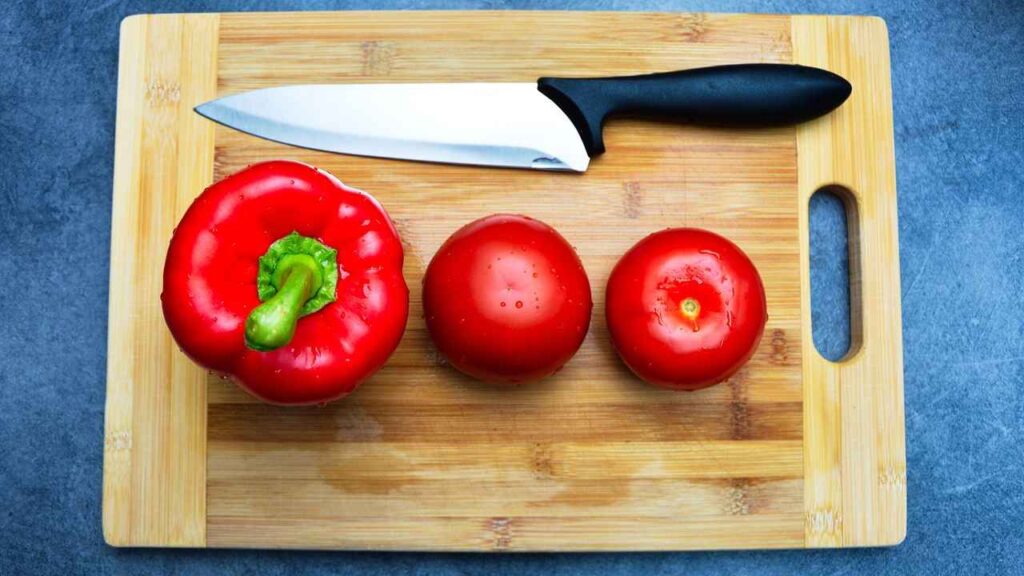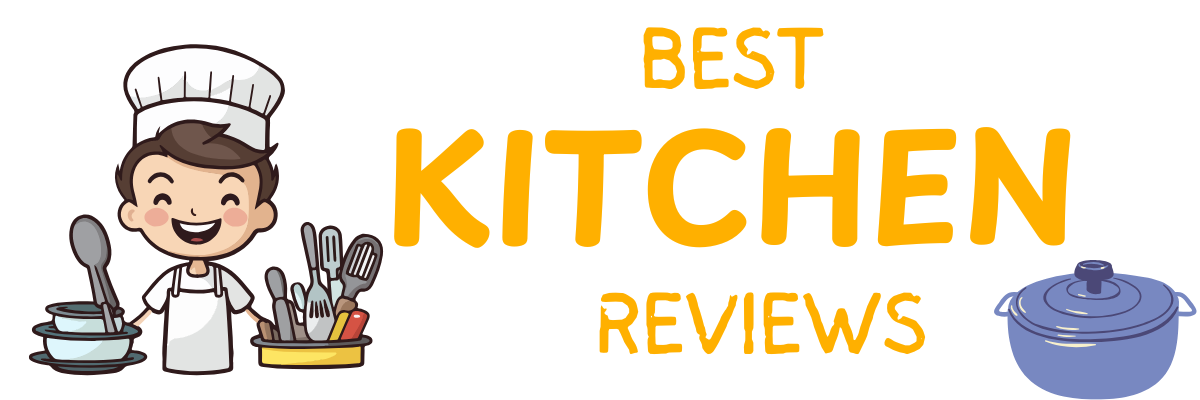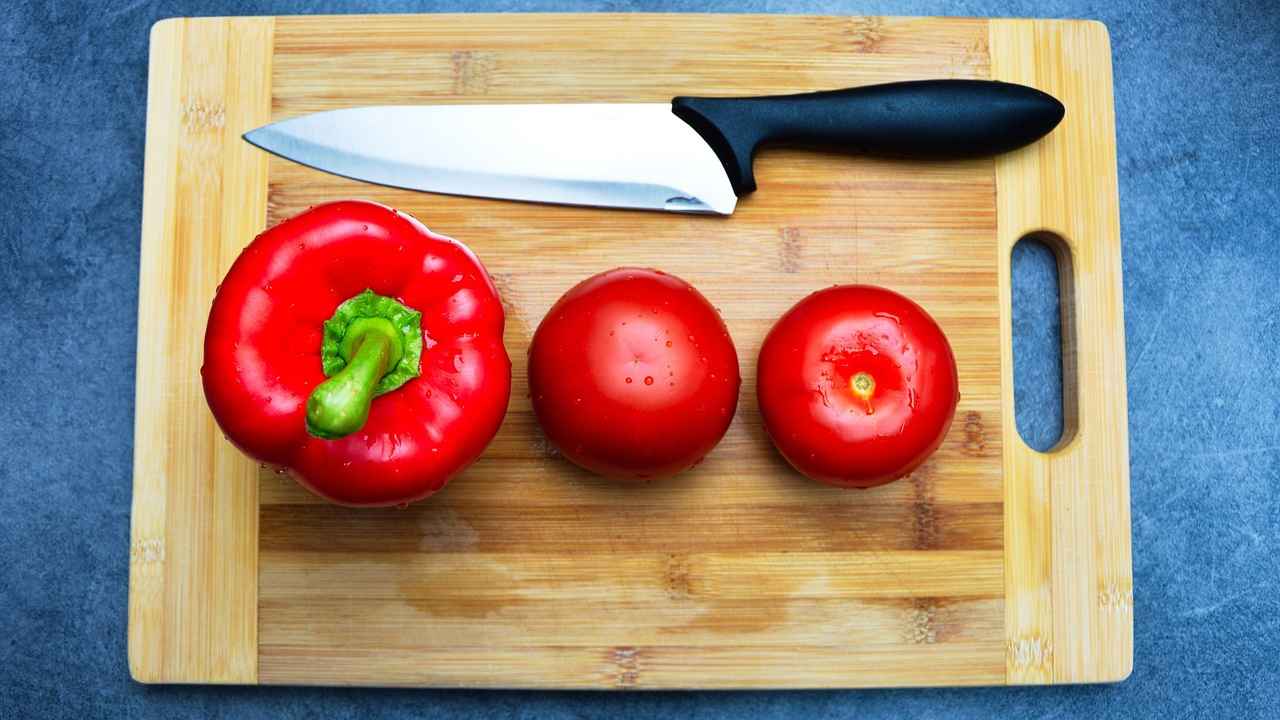Have you ever been confused by the endless options of cutting boards available? Whether you’re slicing fresh vegetables, preparing meat, or just looking for a reliable surface for meal prep, the cutting board you choose makes a big difference. Picking the right one isn’t just about aesthetics; it’s about hygiene, durability, knife care, and even the environment.
The best cutting board for food preparation depends on your kitchen needs and habits. Do you prefer low maintenance? Are you worried about bacteria? Or are you looking for something eco-friendly? This guide will walk you through the various types of cutting boards, their pros and cons, and how to care for them. By the end, you’ll feel confident about choosing the perfect cutting board for your kitchen.
Top Features to Look for in the Best Cutting Board for Food Preparation

Types of Cutting Boards
Cutting boards come in different materials, each with its strengths and weaknesses. Let’s dive deeper into the most common options.
1. Wooden Cutting Boards
Wooden cutting boards are a long-time favorite in kitchens. Made from materials like maple, walnut, or teak, they’re prized for their durability and classic look.
- Benefits:
- Gentle on knives, helping to maintain sharpness.
- Durable and can last for years with proper care.
- Naturally resists bacteria when cleaned regularly.
- Drawbacks:
- Requires regular oiling to prevent cracking.
- Not dishwasher-safe.
- Can warp or stain if not cared for properly.
Wooden boards are ideal for cutting bread, vegetables, and cooked meats but may not be the best choice for raw meat due to cleaning challenges.
2. Bamboo Cutting Boards
Bamboo cutting boards are an eco-friendly option that combines durability with sustainability. They’re made from a renewable resource and have a sleek, modern look.
- Benefits:
- Lightweight and easy to handle.
- Resistant to water and stains.
- Environmentally friendly and biodegradable.
- Drawbacks:
- Harder than wood, which can dull knives faster.
- May crack or split if not maintained properly.
Bamboo boards are a great middle ground between durability and sustainability, ideal for light chopping and general kitchen use.
3. Plastic Cutting Boards
Plastic boards are practical and versatile. They come in various sizes and colors, making them perfect for avoiding cross-contamination when handling raw meats and vegetables.
- Benefits:
- Affordable and widely available.
- Dishwasher-safe for thorough cleaning.
- Lightweight and easy to replace.
- Drawbacks:
- Develop deep grooves over time, which can harbor bacteria.
- Less aesthetically pleasing than wood or bamboo.
Plastic cutting boards are excellent for raw meat and fish preparation due to their non-porous surface and easy sanitization.
4. Glass Cutting Boards
Glass cutting boards are stylish and hygienic, but they’re not ideal for heavy-duty chopping.
- Benefits:
- Completely non-porous, making them easy to clean.
- Heat-resistant, doubling as trivets.
- Durable against stains and odors.
- Drawbacks:
- Tough on knives, dulling them quickly.
- Can shatter if dropped or used too roughly.
Glass boards are best suited for light tasks like serving cheese or slicing fruits and vegetables.
Key Factors to Consider
Choosing the best cutting board for food preparation depends on several factors. Here’s what to keep in mind:
1. Material
Each material has its unique features. If you prioritize knife care, go for wood. For low maintenance, choose plastic. For sustainability, bamboo is a great choice.
2. Size and Thickness
A larger board provides more space for cutting, but it may be harder to store. Thicker boards are more stable but heavier to handle.
3. Hygiene
Plastic and glass boards are easier to sanitize, especially for raw meat. Wooden and bamboo boards can be just as clean if maintained properly.
4. Durability
Wooden boards can last for years with care, while plastic boards may need frequent replacement as they wear down.
5. Budget
Plastic boards are affordable, while wooden and bamboo boards can be pricier but offer a more premium feel.
How to Properly Maintain Cutting Boards
No matter what type of cutting board you choose, proper care is essential to extend its life and keep it safe to use.
Wooden and Bamboo Cutting Boards
- Cleaning: Wash with warm, soapy water immediately after use. Avoid soaking them, as this can lead to warping or cracking.
- Oiling: Use food-grade mineral oil once a month to prevent drying and splitting.
- Sanitizing: Use a vinegar solution or sprinkle salt and rub with a lemon to kill bacteria.
Plastic Cutting Boards
- Cleaning: Most plastic boards are dishwasher-safe, making them easy to sanitize.
- Replacement: Replace the board once it develops deep grooves that are hard to clean.
Glass Cutting Boards
- Cleaning: Simply rinse or place them in the dishwasher.
- Usage: Reserve glass boards for light tasks to avoid dulling knives.
Conclusion
Finding the best cutting board for food preparation doesn’t have to be complicated. Here’s a quick recap:
- Wooden and bamboo boards are great for knives and have a classic look but need more care.
- Plastic boards are easy to clean and budget-friendly, making them perfect for raw meat.
- Glass boards are stylish and easy to maintain but not ideal for heavy chopping.
By considering your cooking habits, hygiene needs, and maintenance preferences, you can choose a cutting board that fits your kitchen perfectly. With the right board, you’ll make food prep easier, safer, and more enjoyable.
FAQs
What’s the most hygienic cutting board material?
Plastic is generally the easiest to sanitize because it’s dishwasher-safe. However, wooden boards can be just as hygienic if cleaned and maintained properly.
How often should I oil a wooden cutting board?
It’s a good idea to oil it once a month or whenever it starts to look dry.
Are bamboo boards better than plastic?
Bamboo is more eco-friendly and durable, while plastic is easier to clean and better for handling raw meat.
Can glass cutting boards ruin knives?
Yes, glass boards are hard on knives and can make them dull quickly. They’re best for light tasks, not heavy chopping.
When should I replace my cutting board?
Replace your board if it has deep grooves, cracks, or stains that you can’t clean thoroughly.


3 thoughts on “How to Pick the Best Cutting Board for Your Food Preparation”